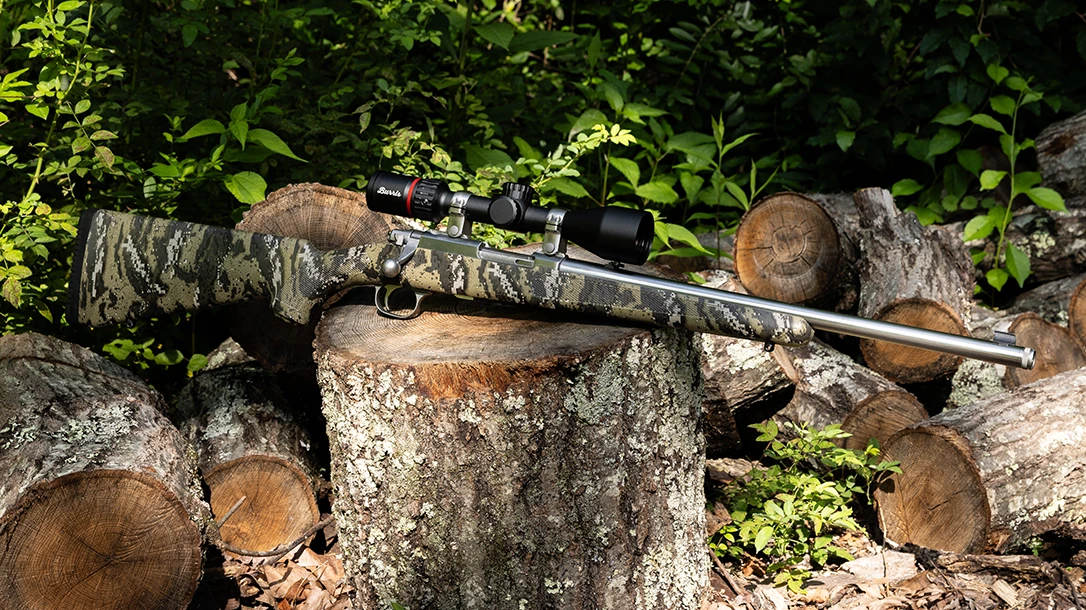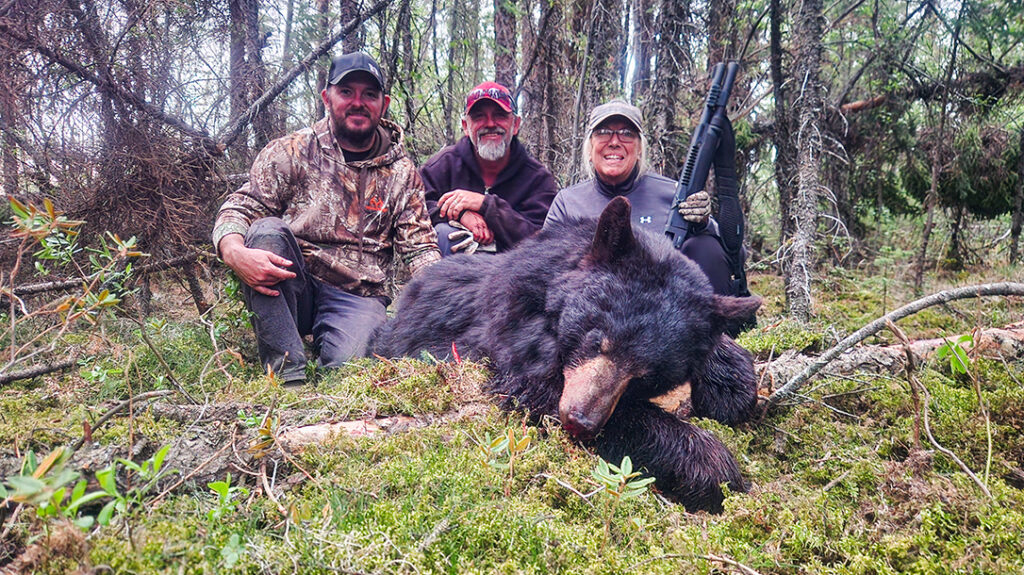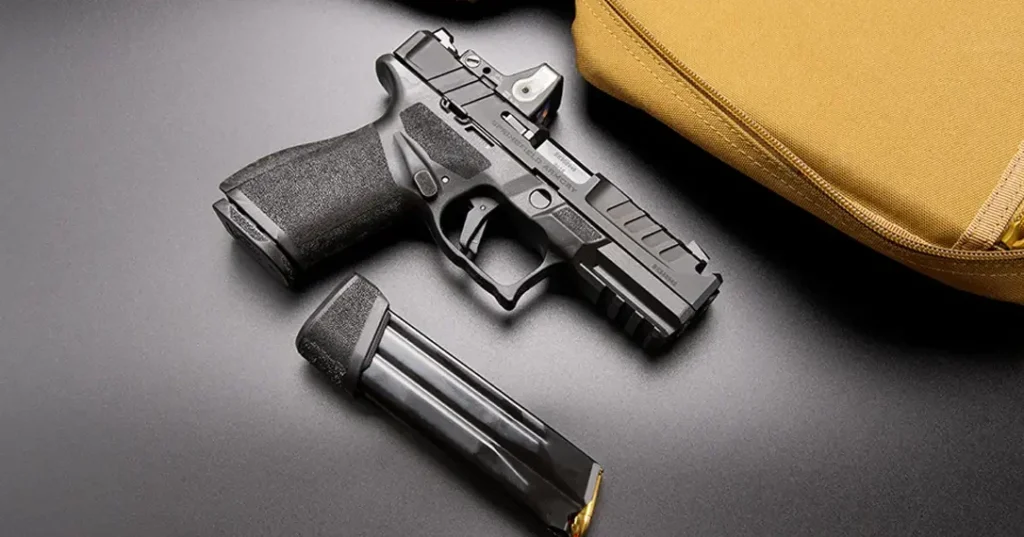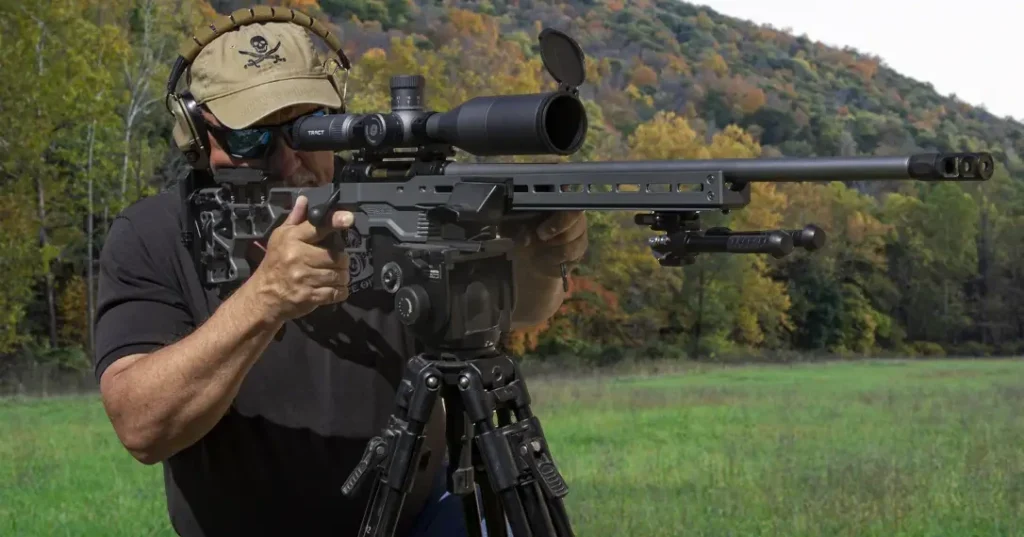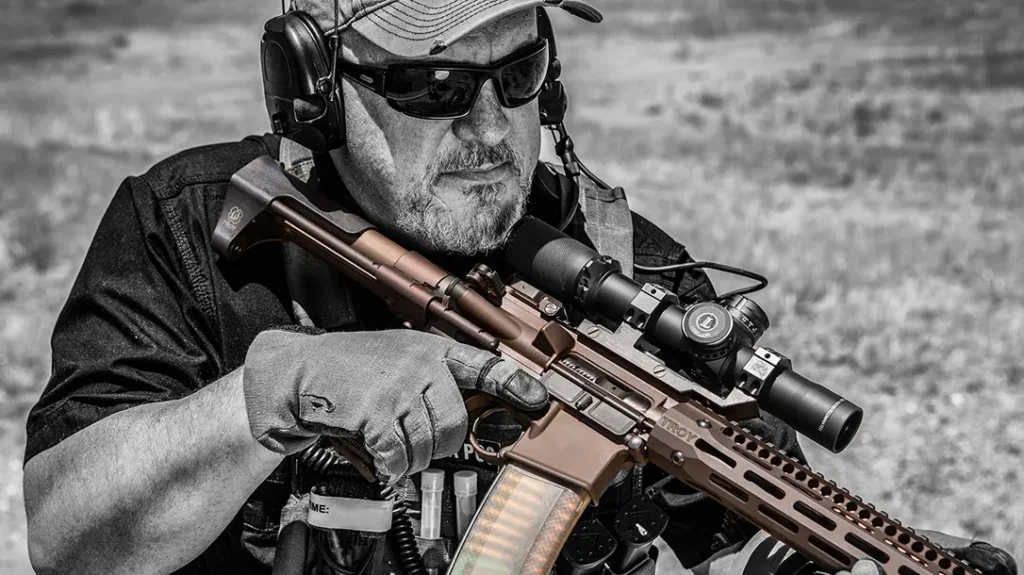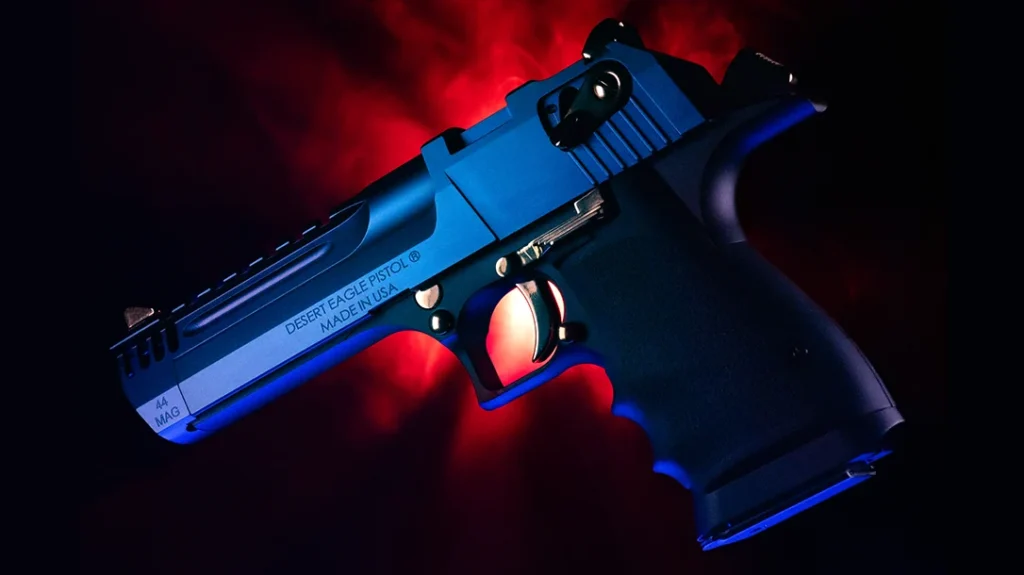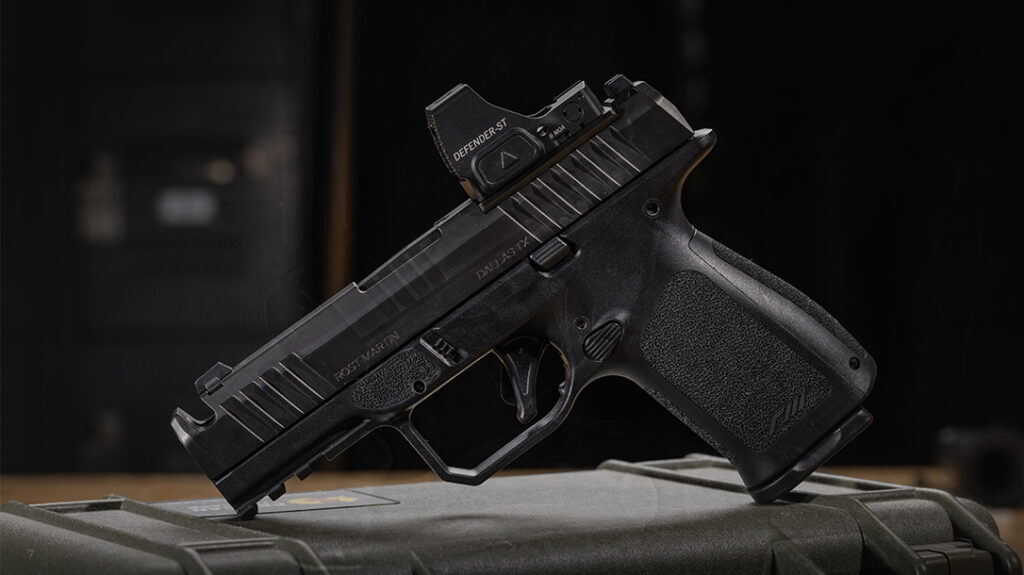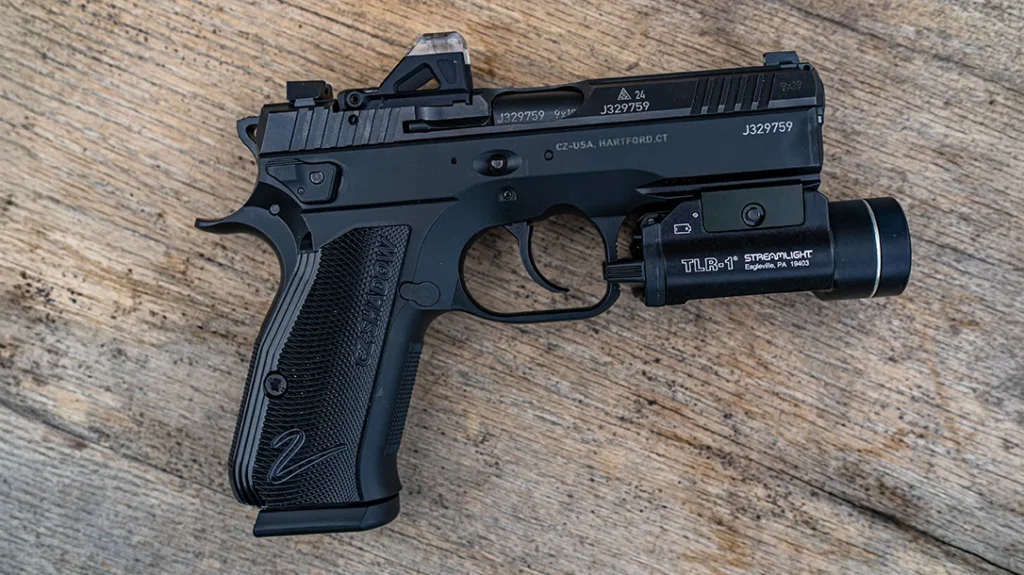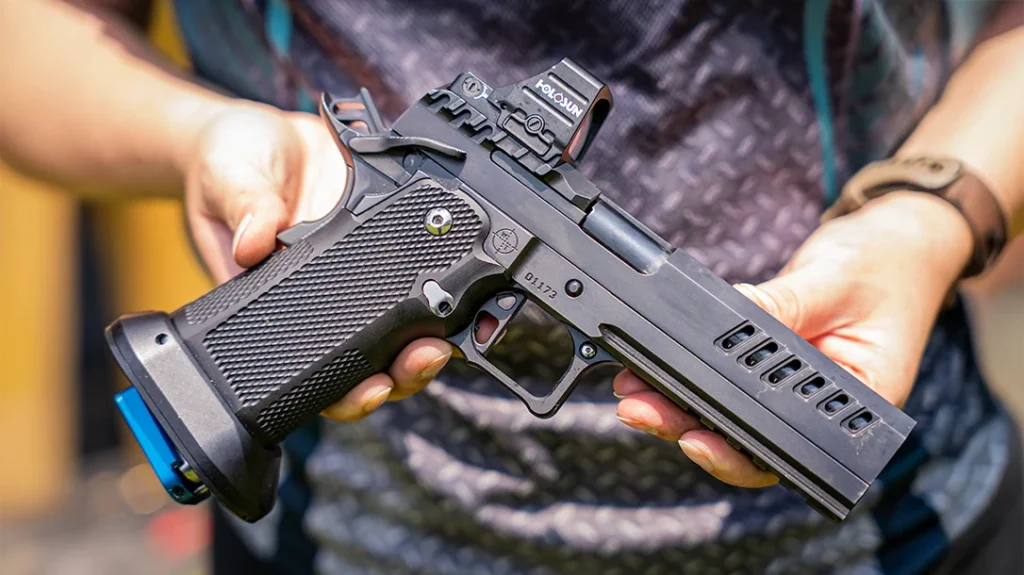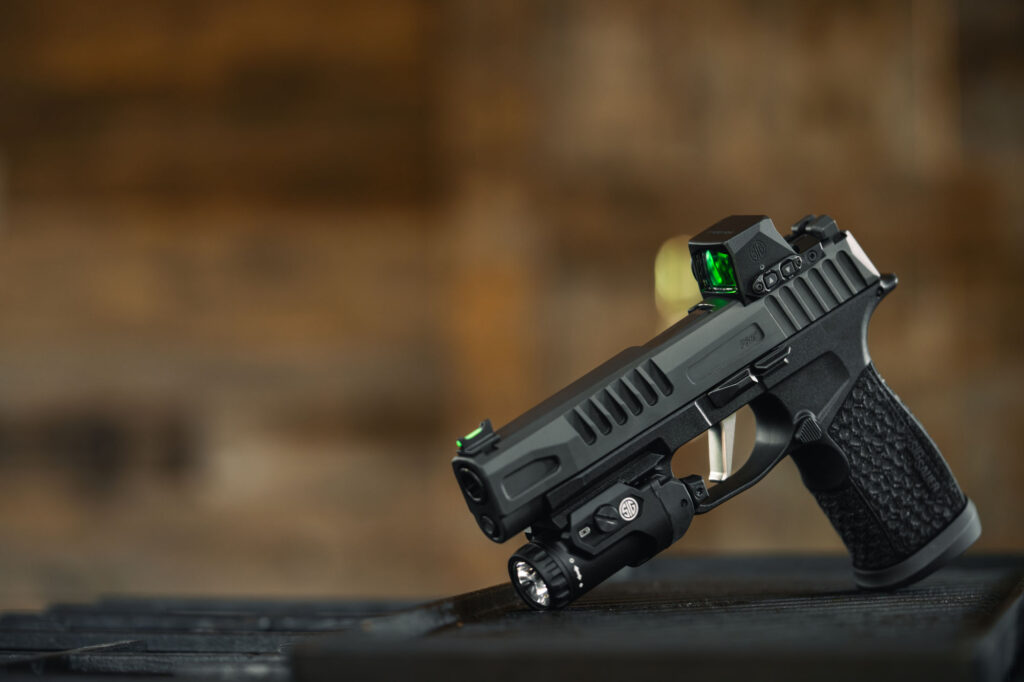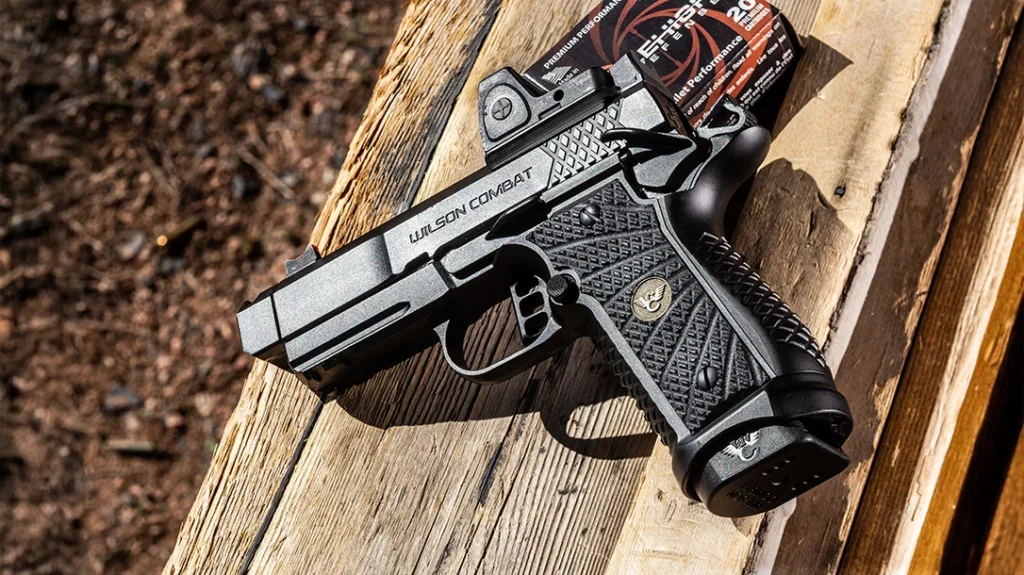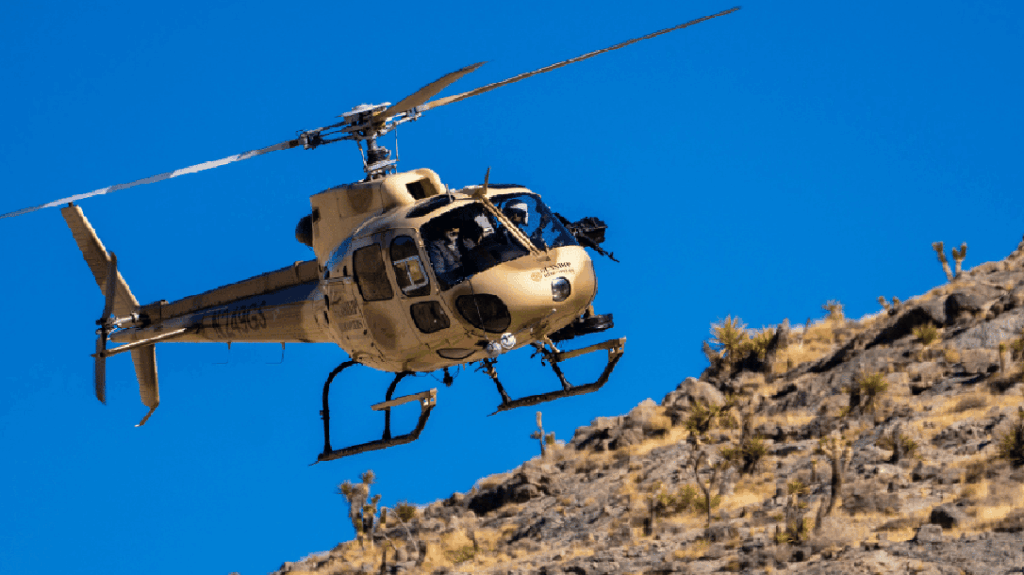It’s been around 15 years now since Ruger originally released the 77/357 rifle in .357 Magnum. A follow-up model to Ruger’s 77/44 in .44 Magnum, the .357 Magnum version has a lot of proud owners and I thought it was worth touching base with the rifle once again to see how it stands out in a world where we have so many choices in firearms. The 77/357 is extremely versatile, has lots of appeal, but it has some quirks worth knowing about if you are giving one consideration for purchase.
Ruger 77/357 Up-Front Details
The 77/357 uses Ruger’s M77 platform as its foundation, and that platform was first released in 1968. Its design was essentially that of a modern-day Mauser K98, especially with the presence of a claw extractor. Rather than using forged steel for the receiver, Bill Ruger was adamant that investment-cast steel be used. That created some worries early on, but Ruger has pretty much mastered the casting procedure for firearms, and the company produces some of the strongest guns on the planet.
The 77/357 itself is 38.50 inches long with a length of pull of 13.5 inches. The little rifle is fairly light at about 5.6 pounds without any attachments. As mentioned, the receiver is cast, stainless-steel and the barrel is 18.50 inches long and is of the hammer-forged variety to provide a longer life and to help retain accuracy better and for longer. The bolt is constructed of stainless steel and has a 90-degree throw with fast lock time for extra accuracy. The stock is a synthetic version that features pretty good texturing for a solid grip on the forearm and in the pistol-grip area of the stock.
Advertisement — Continue Reading Below

Unique Features
The 77/357 has a couple of unique features that separate it from most other rifles. First is the detachable rotary magazine that offers a capacity of 5 rounds. Next are the scope-ring cuts machined directly into the receiver for an intended benefit of a stronger mount. The 77/357 actually ships with two scope rings, but we can talk about that later. A few other features include sling-swivel studs, a three-position safety that allows the bolt to be locked while loading and unloading, and the barrel is threaded (1/2 x 28) for mounting a suppressor.

Advertisement — Continue Reading Below
While rings ship with the rifle, the 77/357 still features an adjustable rear sight with a front blade that showcases a gold bead for easier visibility. As mentioned, the major components are fashioned from stainless steel and the stock wears what Ruger calls a “Desolve Bare Reduced Camo Synthetic”. I don’t know what that is but I think it looks pretty snazzy with the stainless-steel components. Since I didn’t have the rifle for a very long time, I can’t attest to the longevity of that camo finish on the stock.

Why the 77/357?
I’ve been around the forums, and the question always pops up as to why would you get the 77/357 when there are much more powerful rifles everywhere? I never understood that logic. Why get a lever-gun in .357 Magnum or .44 Magnum in that case? To me, you pick the right tool for the job. Over the weekend, I and a few friends of mine commemorated the D-Day anniversary by cooking out and shooting old WWII guns—and a few others as well. I shot a fantastically expensive rifle in .416 Rigby that day. In fact, I shot it rather well. But at around $13 a shot, I’m not toting it around for light pest control or whitetail hunting just because it’s more powerful.
Advertisement — Continue Reading Below
For me, the appeal of the 77/357 is its versatility. There are a wide variety of .357 Magnum loads available for hunting, pest control, and personal defense. There are extremely light loads for blistering velocities and extra range, and there are heavier loads like 180 grains, 200 grains, and even 220 grains for hunting medium-sized game. That doesn’t even take into account the number of .38 Special loads that can be shot in the 77/357. Those can be used for hunting smaller game and, with a suppressor attached, they can be used for a little night-time pest control without alarming the neighbors. For that matter, if you have a SHTF scenario, it could also be deployed to do a little stealth hunting without giving away your position.
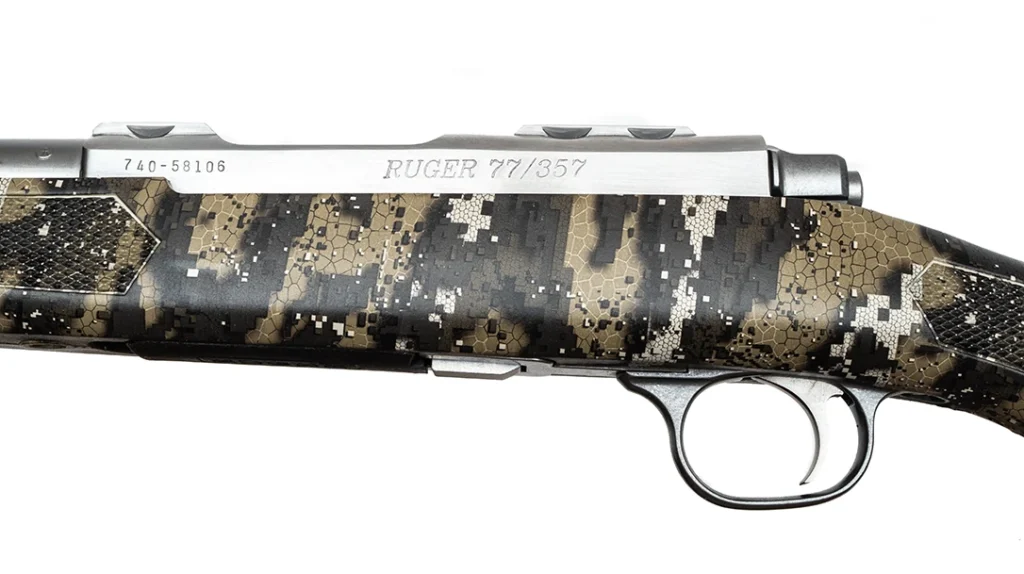
Beauty Of The Ruger 77/357
The beauty of the .357/.38 platform is that there’s ammunition for it everywhere. It’s not a specialty round at all. You can pick up either caliber in places like your local FFL and even at Wal-Mart. On top of that, the rounds are generally significantly less expensive to shoot than standard rifle-caliber rounds. Why spend $1.50, $2.00 or even $3.00 just because a standard rifle round is more powerful when a fifty-cent round will get the job done? Another benefit of the 77/357 platform is that it’s an excellent training rifle that a shooter can grow into after a little time. They’re able to start off with a very soft-shooting .38 Special load to learn the fundamentals and then ladder up the power level enough with .357 Magnum to have a rifle that can get some real work done.
Advertisement — Continue Reading Below
Of course, the last thing that appeals to me is the ability of the 77/357 to share the same ammunition as a revolver the user might be carrying. I’ve always had an affinity for using the same ammo between a rifle/carbine and a sidearm. But that’s a more subjective impression on my part than anything else. But with all that said, none of the 77/357’s appeal was going to matter much until I put some rounds through it, test everything, and see if it lives up to idea I had about it being part of my rotation. The only way I could do that was to hit the range and see what it was all about.

Burris Fullfield 3-12×42
Right about the time I was starting this article, a Burris Fullfield scope showed up on my doorstep. I had no idea it was coming. It was just there when I opened the door one day. I figured someone wanted me to try it out for an article, so I thought it might just be the thing to try on the Ruger 77/357. It has a 3-12 zoom on it which is a bit of an overkill for .357 Magnum, but I figured it wouldn’t hurt to try it out anyway. It’s a rear focal plane scope with a one-inch tube, it includes a 42mm objective diameter, and it sports the company’s Ballistic E3 reticle.
Advertisement — Continue Reading Below
To make adjustments for elevation and windage, the dials offer a one-quarter MOA adjustment with a total of 72 MOA of movement. The scope has a fairly short eye relief of 75-88 millimeters and it offers a field of view of 36 to 9.5 feet based on the zoom level. Overall, the scope is 11.5 inches long and weighs 14.7 ounces. The Fullfield is nitrogen purged to make it fogproof and that sealing ensures the scope has some level of weather-proofing, though I couldn’t find any specific documentation online or in the manual as to the level of that weather-proofing. A phone call to Burris provided no answers in that regard either. The Fullfield I received wears a matte-black finish and there are some models that are available with illuminated reticles and larger objectives.
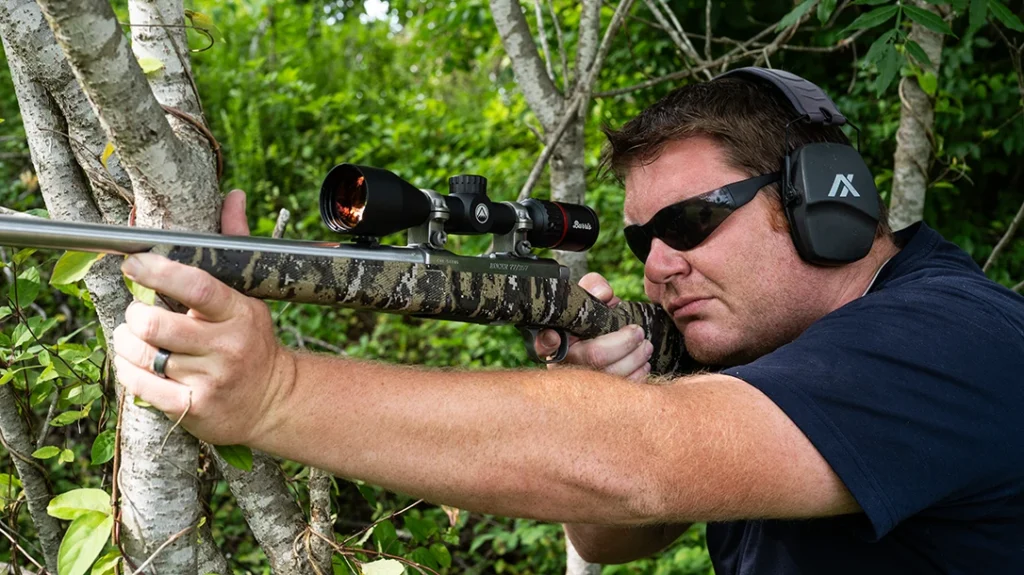
Mounting The Optic
I mounted the Fullfield on the 77/357 with the rings that came with the rifle and that work with the machine cuts in the receiver. To be honest, it wasn’t the optimal set up. Because of where the cuts are in the receiver, it was fairly awkward to get the scope mounted for me to see a clear view. The scope is only so long, and I really didn’t have a way to bring it farther back for better eye relief because I was out of room up front, but I made do with what I had. Additionally, the rings that came with the 77/357 weren’t very high and the front bell of the scope ended up pressing down against the folded-up iron sight. Again I made do, but Ruger’s solution to mount a scope is not a very good one in my opinion.
Advertisement — Continue Reading Below
Were I to buy this rifle, the only way I would be happy using it with a scope would be to buy a Picatinny rail supplied by a company like Weigand Machine and Design that offers one that is mounted via the receiver cuts. The rail and all of the attachment hardware are available in the kit. This would provide more latitude in the placement of the scope, and it would also allow using a variety of red-dot optics that are on the market for more close-up pest control work around the home or farm. And since it’s just .357 Magnum, you’re not going to need the most robust mounting mechanism available since the recoil is very, very tame.
Shooting & Handling Results
I do a ton of semi-auto reviews, whether it’s rifles or pistols and doing a range review on a bolt-action rifle is much different. I’m not doing burn downs, not testing the trigger reset by checking splits, and not running normal drills most people would think of for a review. It’s a pretty slow, but straightforward process of keying in on the most critical elements. Sure, you want to check for reliability, but accuracy, trigger pull, handling and the interface are at the top of the list as well.
I brought a shooting partner along to help with the review, particularly with some of the accuracy testing and free-standing shooting. Both of us had pretty much the same opinion of the detachable rotary magazine that’s used in the 77/357. Loading it was no issue and the reliability was top-notch, but it was very finicky to put in and take out of the rifle. A couple of times it dropped free on its own like a 10/22 magazine with a press of the release. But most of the time, it hung up and it was an awkward process to press on the mag release with one hand, hold the rifle and then use the other hand to try and finagle it out of the receiver.
Mag Concerns
Since it’s a flush-fitting magazine, it was tough to get enough purchase on the mag with our fingers to sort of wiggle it out of the rifle. I’d rather that the magazine had a bit of an extension to it, and stick out of the rifle a bit, to get two to three more rounds capacity and to have enough real estate to get a good grasp on it to make it much easier to remove. I’m not talking about a 30-round banana mag, just something a bit longer.

Accuracy Testing
After we got settled in and started doing the accuracy testing, we had some really high points and some not-so-high points as well. It turns out that this particular 77/357 is very picky about the ammo it likes. While it was utterly reliable with everything as far as function goes, it seemed to shoot very accurately with only two of the five loads that we tried. Those loads were both from Lehigh Defense and were the 105-grain Controlled Fracturing load and the 120-grain Xtreme Defense load which has a copper-solid bullet which has a profile similar to a Philips screwdriver at the tip.
For testing this rifle’s accuracy, I tried to estimate how far out I would use this rifle for small game hunting and pest control, especially with a low-power scope or even a red-dot sight. I settled on 75 yards, but honestly, I think the majority of shots would be much closer than that. At that distance, the Lehigh Defense CF load had the best single grouping of 0.63 inches. The Lehigh XD load turned in results nearly as impressive with a best group of 0.75 inches.

The other loads didn’t fare as well with the accuracy testing, with most groups running in the 1.5-inch to 2.75-inch range. Remember, this was only at 75 yards, so I expected a bit better than that. It’s great that the Lehigh loads performed so well, but the downside is that they are almost $2.50 a round. The end user will probably have to search around for the less expensive, off-the-shelf ammo that this rifle prefers, or they could go the route of reloading and really dial in the recipe for this rifle.
Ruger 77/357 Shooting Impressions
The movement of the bolt was very smooth and there was no impediment of any sort to cycling the action. The trigger, though, is a bit of a different story with an upside. While there’s no slack to the trigger and the break is very crisp and pronounced, the trigger pull is a bit heavy for me with this type of rifle. With five pulls, I got an average of 5.5 pounds for the pull before the break. It’s not completely atrocious but should be a little better. For some reason when I was doing the accuracy testing, it felt heavier than just 5.5 pounds. The upside is there are several aftermarket triggers that can lighten up the pull and help enhance your accuracy for longer-distance shots.
Second Session
During another session with my brother and I together, we played around with the 77/357 and a suppressor I had on hand. For this, we mainly used .38 Special loads, though my particular suppressor is rated for .357 Magnum use. We weren’t doing any real-life pest control or anything, so it was mainly small bottles and cans freestanding at a good distance. I have to say it was a blast shooting the rifle suppressed with the .38s. The set-up was very quiet with low-energy loads and I had no issues cycling the .38s for quick follow-up shots.
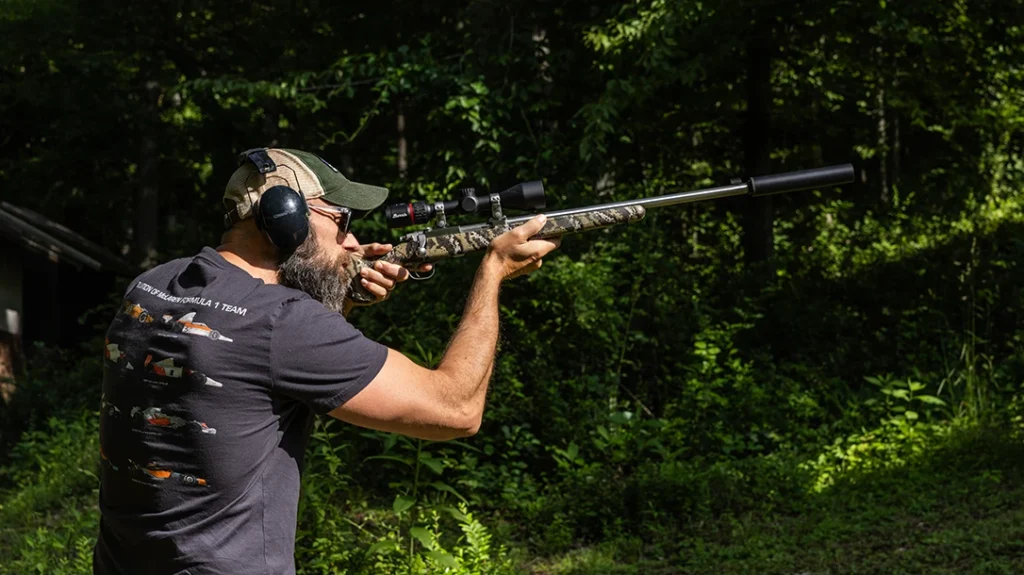
I started to get a lot of ideas for how to use the 77/357 while suppressed, and that part of the review process made the 77/357 even more appealing to me. The thing to remember, though, is that load selection is key for working with the suppressor. Even .38 Specials can hit supersonic speeds running through an 18.5-inch barrel. This is when having some reloading knowledge and skill will pay off so you can fine-tune to that sweet spot between good velocity and keeping it quiet at the same time.
Scope Performance
As far as the Fullfield 3-9×42 is concerned, I was pretty impressed with its build quality and performance overall given its MSRP of around $300-$325 depending on which variant you choose. The specs are good and the interface with the turrets was a pleasant experience, and they included the return-to-zero functionality. I didn’t get the illuminated model and the one I reviewed had a fixed-parallax setting, so no adjustments are available in that regard. The glass offered nice clarity for the price, but it wasn’t exceptionally bright, but then again, I had no issue with seeing dark targets getting close to sunset.
Aftermarket Parts
On the other hand, I was scratching my head on a couple of things with the Ruger 77/357. I’ll be honest and forthright about it. There are some things that I just didn’t like such as Ruger’s mounting solution for scopes, the relatively heavy trigger, and the handling of the magazine when inserting it into and extracting it from the rifle. The good news is that two of those things can be easily fixed with that Weigand Picatinny rail I mentioned earlier and those various aftermarket triggers that will definitely improve that aspect of the rifle’s performance.

The bad news is that by the time you buy the rifle and get those aftermarket options, you’re probably going to have around $1400 or $1500 invested in the project. About 15 years ago, the 77/357 usually sold for under $700. So, there’s been a significant price jump since then. I can’t call whether it’s worth it or not. That’s up to the end user. An MSRP of $1269 does seem pricy for a rile chambered in .357 Magnum. However, a rifle is a rifle and the 77/357 still has all of the fantastic craftmanship, the hammer forged barrel and the premium components of a standard rifle, so I guess it is what it is.
Final Thoughts On The Ruger 77/357
There’s still a lot of appeal for me with this format. It scratches my itch when it comes to ammo compatibility with a sidearm, and it’s definitely a cheaper alternative to shooting a standard rifle given that you find the right load for it. I like the robust build quality, and I liked the overall handling and feel of the rifle against my shoulder. My affinity for it grew even more after shooting the suppressed rounds through it and when all of the use cases for it started popping into my head.
Fifteen years after its introduction, I think there’s still a place for the 77/357, especially if you live in the country, possibly on a farm. It’s a very specific tool that can do both light and heavier work, but you’re really going to have to have a real use for it to justify the outlay of money for it. Of course, you can always buy one “just because”, but no mistake, this isn’t a safe queen of any sort. The Ruger 77/357 is a tool that’s meant to be put to work.
Ruger 77/357 Specifications
Caliber: .357 Magnum/.38 Special
Action: Bolt-Action
Barrel: 18.5 inches
Overall Length: 38.50 inches
Length of Pull: 13.5 inches
Weight: 5.6 pounds
Stock: Desolve Bare Reduced Camo Synthetic
Sights: Adj. Rear, Dovetailed Front Blade w/Gold Bead
Finish: Stainless Steel
Capacity: 5+1
MSRP: $1279
Ruger 77/357 Performance
| Hornady 135gr. +P Critical Duty | |
| Average Velocity | 1,571 FPS |
| Best Group | 1.50 inches |
| Average Group | 1.89 inches |
| Hornady 158gr. XTP | |
| Average Velocity | 1,771 FPS |
| Best Group | 1.46 inches |
| Average Group | 1.95 inches |
| Lehigh Defense 105gr. CF | |
| Average Velocity | 1,979 FPS |
| Best Group | 0.63 inches |
| Average Group | 0.86 inches |
| Lehigh Defense 120gr. XD | |
| Average Velocity | 1,961 FPS |
| Best Group | 0.75 inches |
| Average Group | 0.94 inches |
| Sig Sauer 125gr. Elite V-Crown | |
| Average Velocity | 1,734 FPS |
| Best Group | 1.26 inches |
| Average Group | 1.14 inches |
Bullet weight measured in grains, velocity in feet per second as measure by a Garmin Xero C1 Pro Chronograph, and accuracy in inches for five-shot groups at 75 yards.
